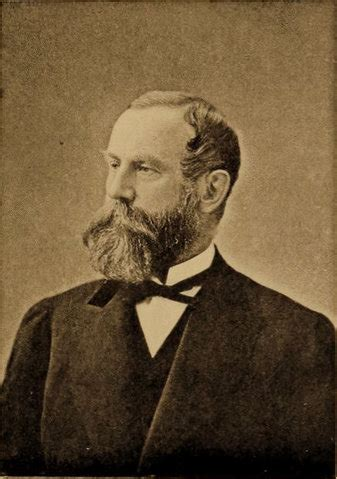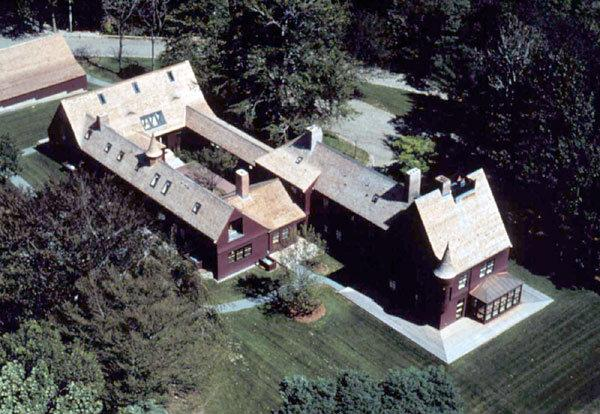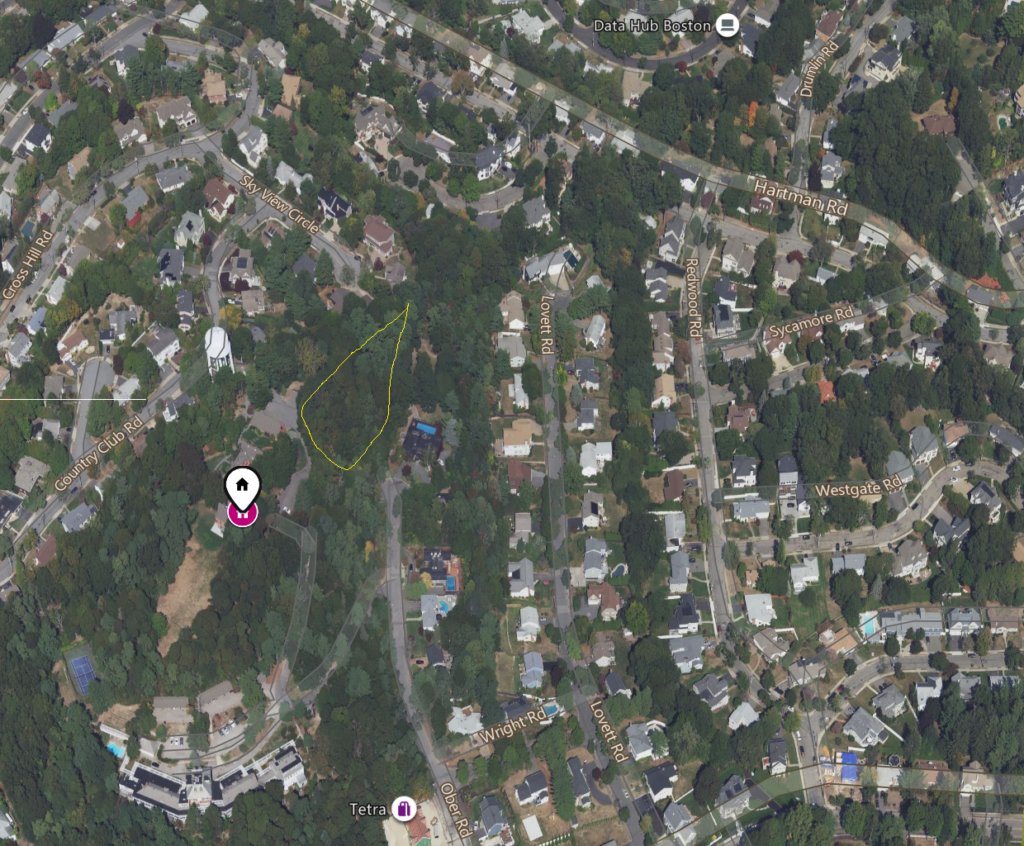Henry Jacob Bigelow (1818 – 1890) was a surgeon and a professor at Harvard University. He is known for the “Bigelow maneuver” for hip dislocation and for promoting ether anesthesia for surgeries.
The Bigelow House was build in 1887 as a single residence home for Dr. Henry Jacob Bigelow. The house was designed by Victorian architect Henry Hobson Richardson. He was hired by Bigelow to design a sprawling country retreat away from the noisy and cramped conditions in Boston. Unfortunately, Dr. Bigelow only got to enjoy the country estate for a couple years, until he died in the home in 1890.

In 1907, the 86-acre Bigelow Estate was purchased by Horace K. Turner, owner of an art publishing company. Turner moved his workshops to the estate so the artists could work in country surroundings. Then In 1920, the entire property, including the Bigelow House and the bungalow workshops, were acquired by the New England Peabody Home. Bigelow House was converted into a dormitory space for the New England Peabody Home for Crippled Children. The Peabody Home was an orthopedic hospital for children who had tuberculosis of the bones, infantile paralysis, severe accidents, and birth defects.
In the mid-20th century The Peabody Home became obsolete.
By the 1970s the Bigelow House was owned by the city of Newton and in deteriorating condition. In 1976 The Dr. Henry Jacob Bigelow House was listed in the National Register of Historic Places (NRHP) as an extension to the Peabody House. It was then restored and divided into five condominium units in the 1980s by the PBS television series This Old House.

Currently the five condominium apartment are privately owned, with three owners making the Trustees of the Bigelow House. Two of the Five units changed hands in the last 5 years and at the moment not all units are occupied. According to the Trustees the annual cost of maintenance for the entire condominiums is about $80K. They are asking for the Newton Historic commission to overturn the Preservation restriction, sell part of the land to a developer and build 5 additional condominiums as a sub-division, with no street frontage. The Bigelow woods that they are proposing to develop have been a natural habitat and an open space for wildlife to live, roam and pass through. The sloped land has hundreds of majestic tall trees that they want to take down in the process. The new condos will not be visible from the original Bigelow House or their top of the hill private location but rather visible from all surrounding single family residences, and negatively affect residents on Ober Rd, Country Club Rd, Sky View Cir, Lovett Rd, and Cottonwood Rd.
